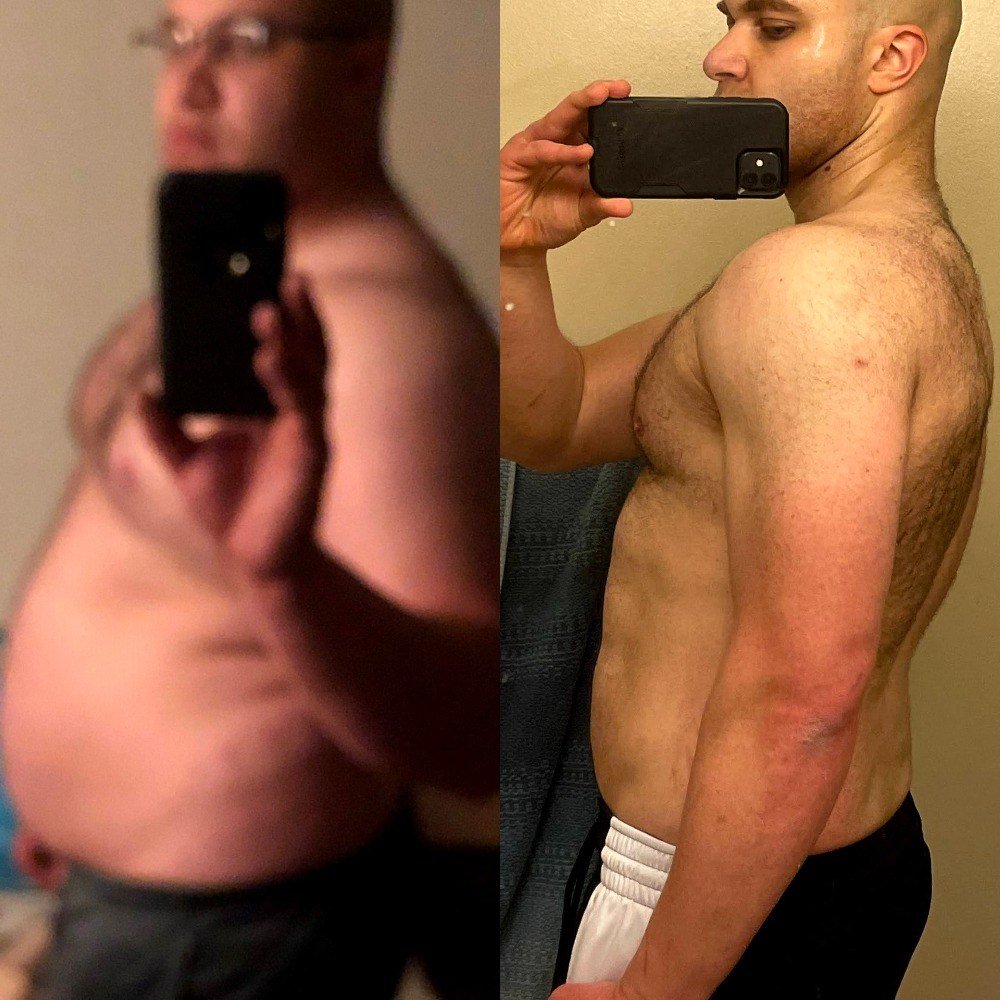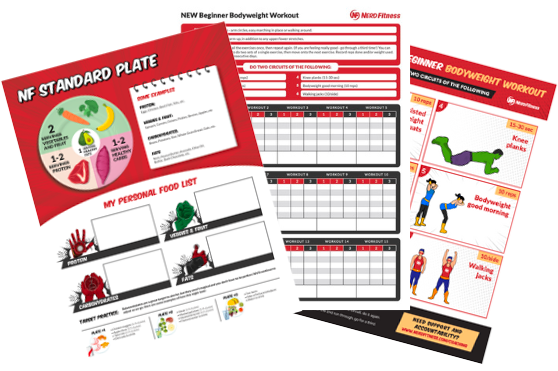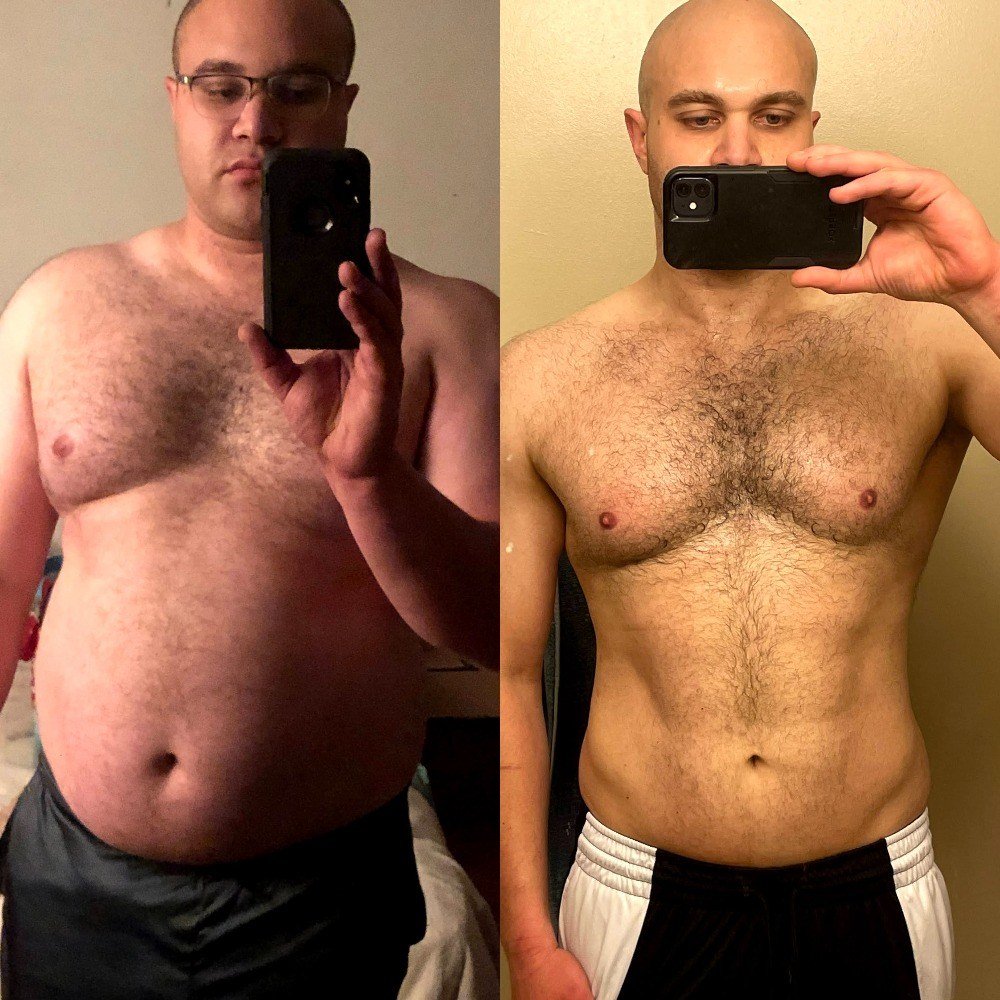
I’d like to introduce you to Brian, a fellow Rebel in our Online Coaching Program who is currently celebrating losing over 75 pounds!
Incredible.
Brian’s achievements are truly amazing, considering all he’s gone through:
- Old injuries? Check.
- Losing and regaining the same weight over and over? Check.
- Frustration over never maintaining progress? Check.
But then Brian decided enough is enough. This time, things would be different.
This time, Brian would ask for help.
I’m honored that he decided to trust us in this most recent attempt.
So let’s explore the plan that Brian and his coach created to make this time different!
The 4 Keys to Brian’s Amazing Transformation
#1) Don’t Underestimate the Power of Eating Your Greens
When you ask Brian about the most important change he’s made as part of NF Coaching, he’s quick to answer: “Eating more vegetables.”
Brian explains:
“Filling up on veggies instead of chips has made me feel a lot better.
I don’t get as hungry between meals anymore, and I’ve even noticed more energy into the afternoon.
For someone who lived on processed food, I never imagined I’d eat vegetables daily.
I almost feel like my coach tricked me to get here. We started by adding a small portion of vegetables here and there, like a salad with my dinner.
Now, most of my meals include a vegetable. It’s wild.”
Takeaway: it’s no surprise that Brian feels better when he eats vegetables instead of chips.
What you might find surprising is that Brian learned to like vegetables.
How’d he do it?
Brian went slow, introducing one new vegetable dish at a time.
You can do the same thing.

Maybe you order a vegetable at a restaurant you haven’t tried before. Or maybe you try and prepare some greens differently.
If you don’t like the new dish, nbd. Just don’t order or prepare it again.
But if you do like it…boom! We can add it to the menu.
Once we find a vegetable we like, our taste buds will start to adapt. We might find that we start to like greens we didn’t like before.
This can help expand our vegetable selection when planning meals.
Here’s a step-by-step plan on eating more vegetables to help you get started.
#2) When It Comes to Strength Training, Start Slow

Here’s another thing we shouldn’t rush through: weight training.
Unfortunately, Brian had to find this out the hard way.
“I’d tried to get in shape before joining NF Coaching a couple of times.
During one such occasion, I hurt myself. I did too much too quickly and injured my back.
I have since learned that proper form is EVERYTHING and it’s best to go slow until you’re comfortable.
Also, my coach has taught me that dynamic stretches BEFORE and static stretches AFTER go a long way towards safety.
Takeaway: when we first start strength training, we need to go slow.
We must learn the movement correctly before we start adding weight to the equation.
When we begin resistance training, our body is not only building strength but also creating internal connections to allow our central nervous system to coordinate properly.
In a way, when we start exercising we’re teaching our body how to talk to itself. If we go too fast, before this improved communication occurs, injuries can happen.
That’s why bodyweight exercises are a great place for beginners to start strength training.
#3) It Can Still Be Possible to Train With an Injury
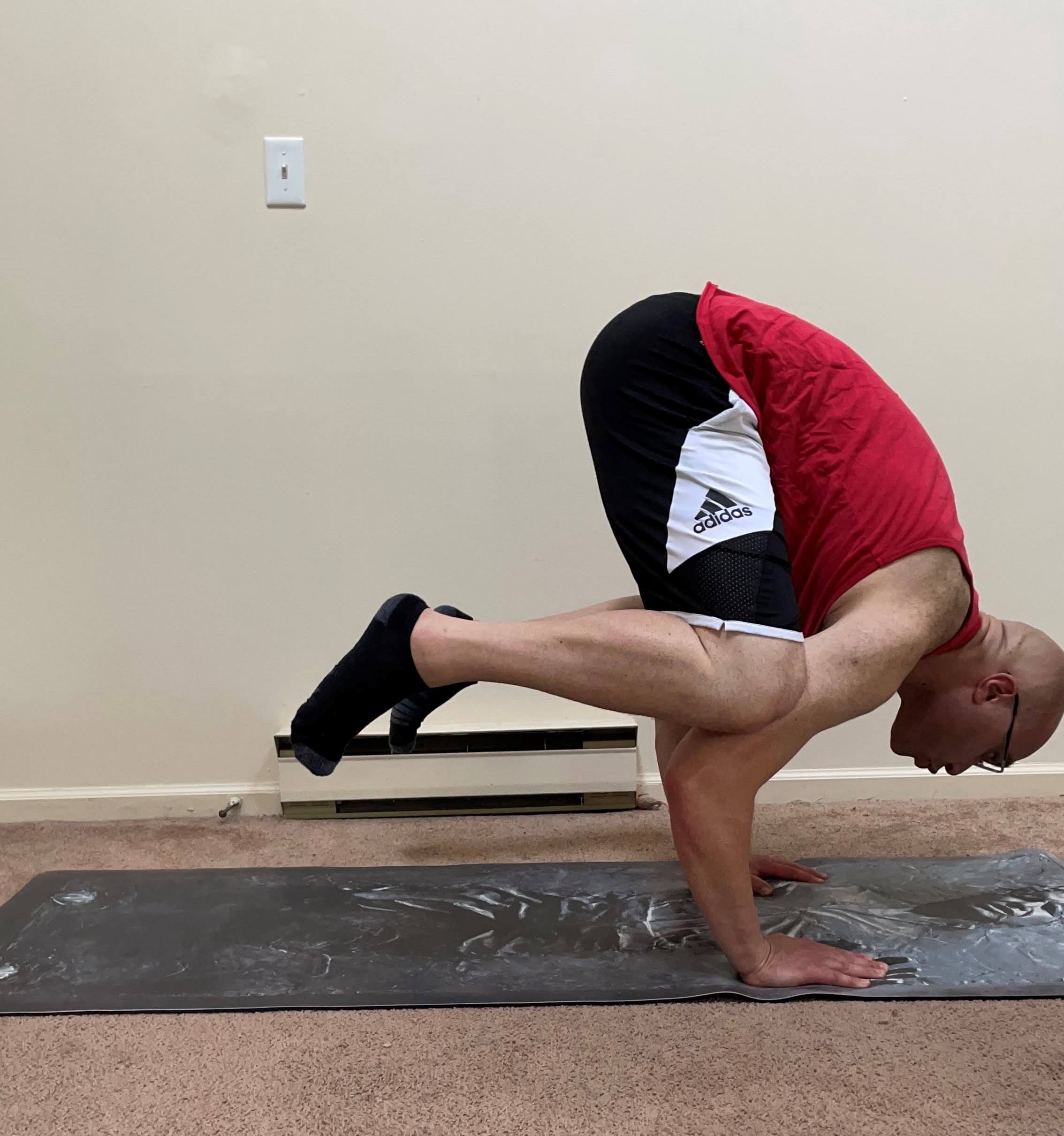
Despite Brian’s back problems, a coach was able to build a workout routine that allowed him to keep progressing.
“Considering my past with injuries, I’m doing mostly bodyweight training stuff.
But I’m surprised how strong I’ve gotten with just these!
For example, the crow pose is really challenging:
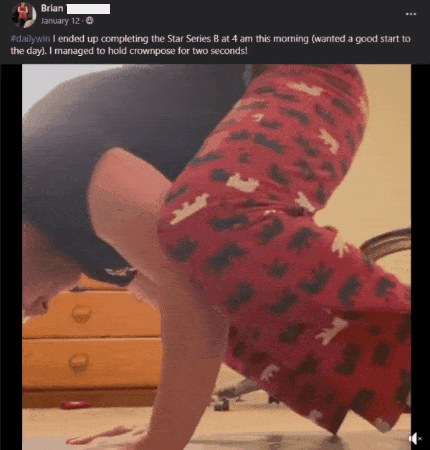
Practicing it consistently has allowed me to build a lot of strength.
Plus, I’ve been doing a little bit of yoga to help my back…which allowed me to make a nerdy purchase:
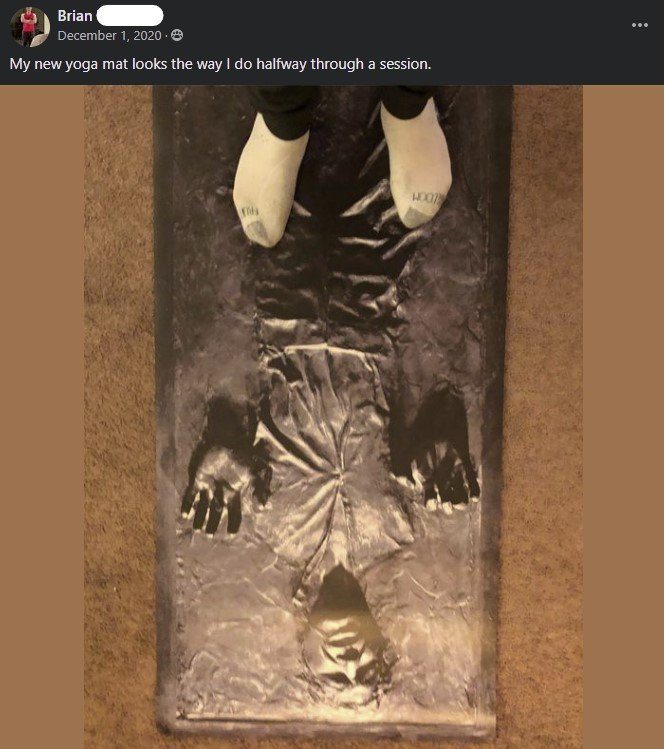
Steve note: Feel free to send this to me!
I’ve even started a regular running practice!
I’m grateful that my coach has helped me continue to grow strong while working around my back issues.”
Takeaway: getting injured STINKS!
But if you are hurt, all is not lost.
There are likely still plenty of ways to stay active.
- If you can’t run, how about an elliptical or stationary bike?
- If you can’t use one leg or the other, can you work out your upper body?
- If you can’t use one arm/shoulder, can you still do lower body exercises like lunges/squats/step-ups?
- If you can’t do any resistance training, can you still go for walks?
A coach (with a doctor’s blessing) can likely create a workout routine around a preexisting injury.
Here are our recommendations for training with an injury.
#4) You Might Be Going Too Fast
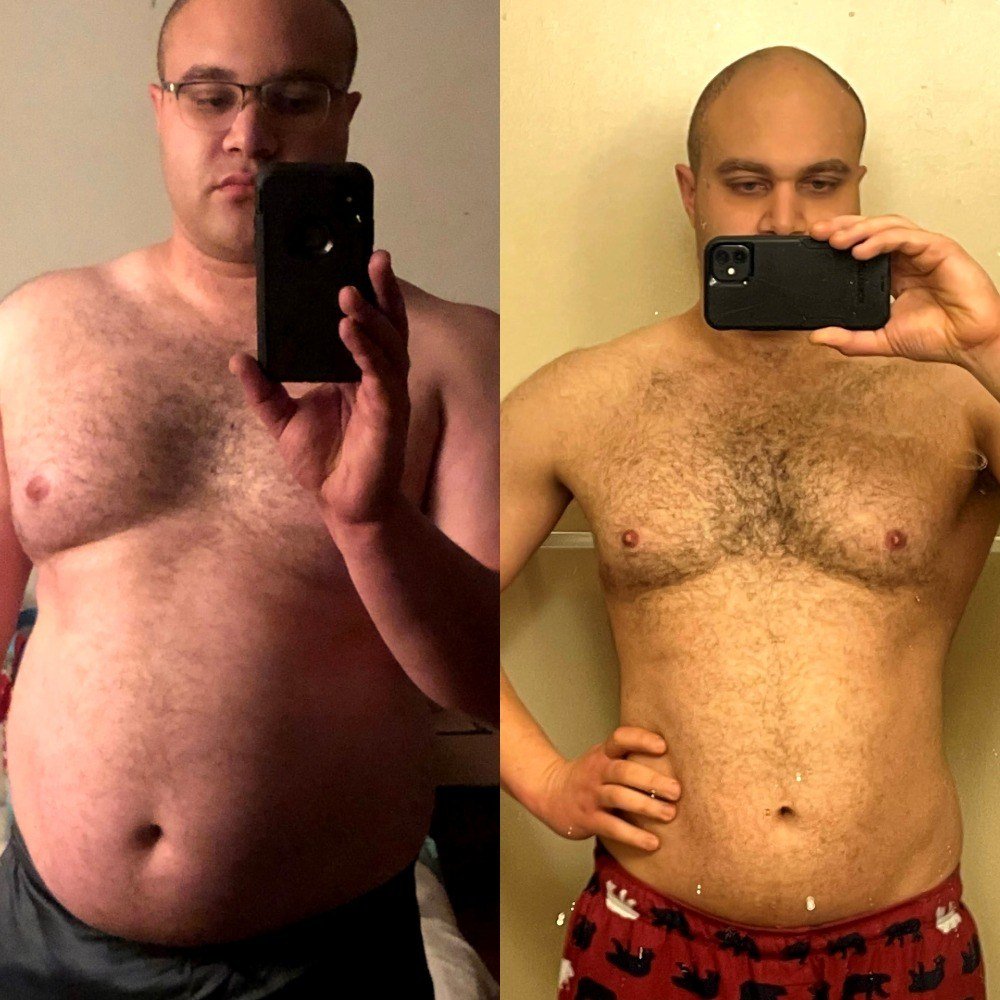
Brian had tried to get in shape twice before.
Why was he successful this time?
Because Brian started slow with Nerd Fitness Coaching.
“My coach helped me set small, reasonable goals over time that grew into significant changes.
Through this, I learned that consistency is key. Even when my life would get crazy or an injury would flare up, my coach helped me do ‘something’ rather than ‘nothing.’
Maybe I’d just go on a walk after work if I was stressed out.”
Brian continues:
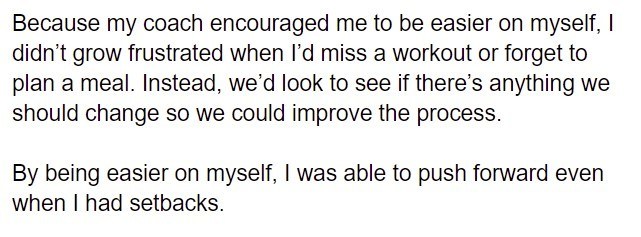
Takeaway: throughout this email, we’ve touched on “going slow.”
For example, Brian did this by:
- Eating his greens. Brian would add a small portion of vegetables to his dinner to start, instead of going full Keto or Paleo.
- Running. Brian started with interval training, only running for brief bursts during his walk. Now he can run a 10k!
- Resistance training. Brian started by just doing bodyweight exercises in his home. Now he can hold himself up in a crow position (which is not easy).
It’s okay if the actions seem super small (one vegetable a day). The important thing is to make a little bit of progress towards our goal, every single day.
Even if it’s not exactly part of our plan (“If I miss a workout I’ll go on a walk”), doing “something” rather than “nothing” can be critical for getting in shape.
Let’s explore that a little more.
A little Every Day Can Go A Long Way
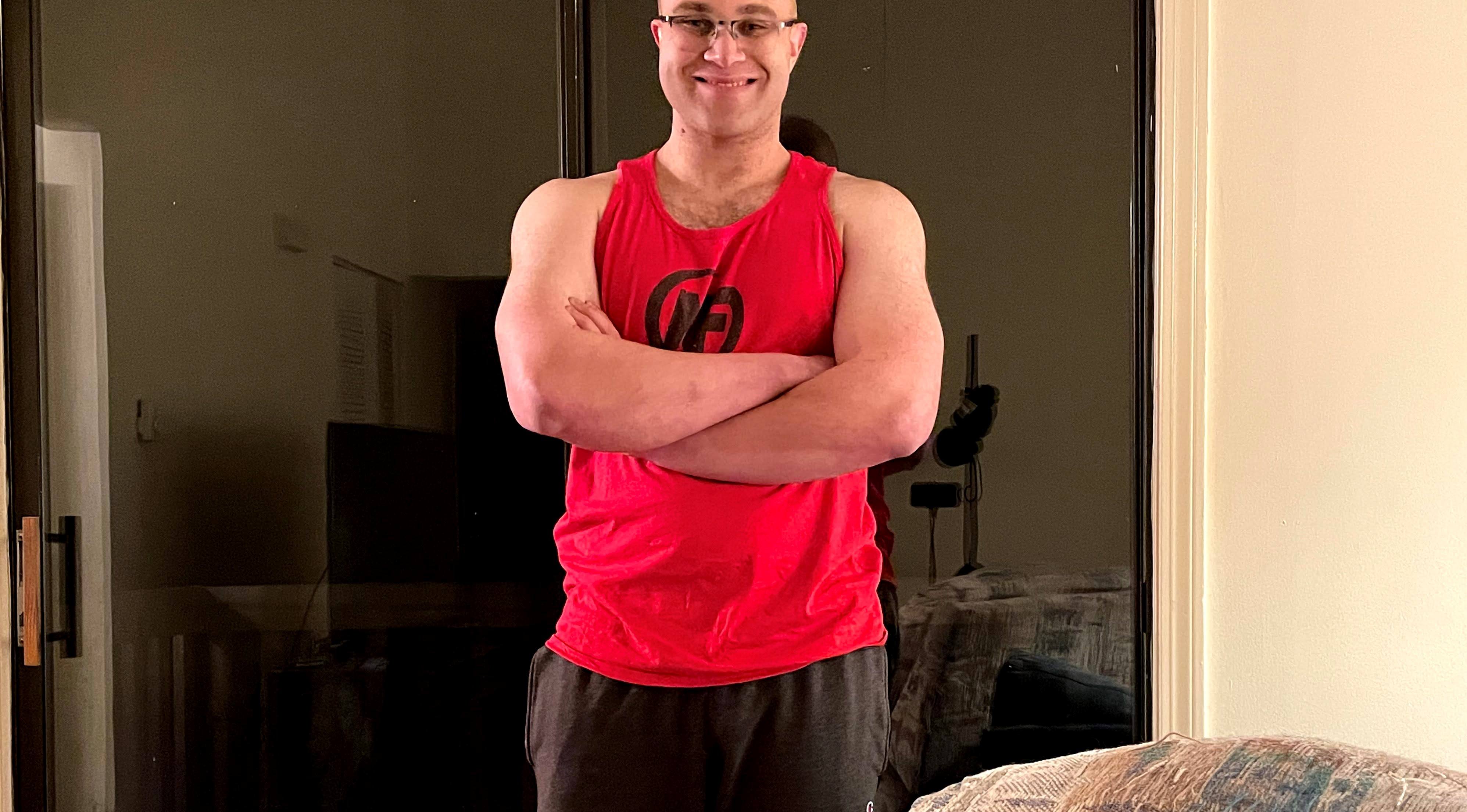
Many clients are surprised at the pace we take in our coaching program.
We intentionally go slow.
We want to make sure the habits we create together stick. That way we prove to ourselves that we can consistently move forward.
Only once that feels sustainable do we add another action or dial up the effort.
This is often a big mindset shift for our clients.
Many of them, like Brian, expect to change everything at once when they sign-up.
They’ll plan on “going Keto” and “lifting weights 4 times a week.”
While these might be great goals, the problem is they often can be way too much, way too soon.
When life inevitably gets in the way (like a back injury), it’s easy to quit altogether until there’s a better time to start again.
Here’s the thing: there’s never a “perfect time.”
The stars will never magically align for us to get in shape.
Instead, we’re going to have to deal with:
- An intense deadline for work.
- A sick child.
- A pulled back.
However, when such events happen, it’s okay to scale back our efforts.
I call this the “Dial vs. Light Switch” Mentality:
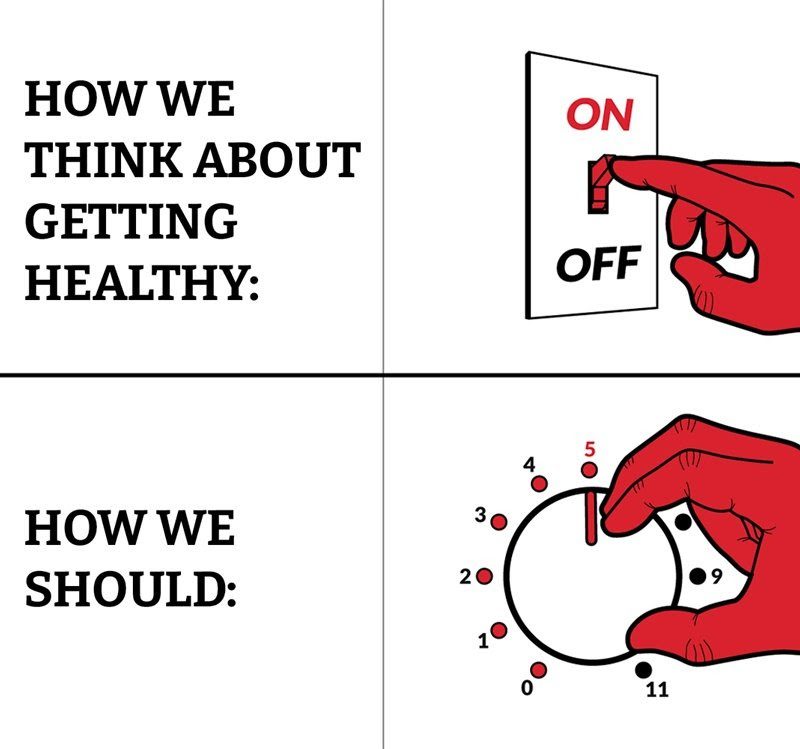
When life throws us a curveball, it’s okay to pull back from 100% (or 11, Spinal Tap style)
But maybe we hit them at 50% (or a 5):
- Instead of lifting weights four times a week, maybe we do resistance training once and go for two long walks during the week.
- Instead of “#ketolife,” maybe it’s a protein shake in the morning and a vegetable with dinner.
This “slow and steady” pace really is the secret of our Online Coaching Program, and something that comes up again and again when we chat with our most successful clients.
If you want to learn about it yourself, we’d love to sit down with you to see if we’d be a good fit for each other.
Because even though you’re unique, we’ve likely seen some of your challenges before:
- Many of our clients have intense jobs.
- Many of our clients manage busy households with kids.
- Many of our clients have preexisting injuries.
There’s likely a way to make progress – even if it’s only a little bit – no matter what challenges you face today.
You just need someone to show you the way.
Ready?
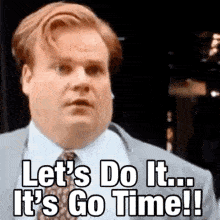
If you want to see if Nerd Fitness Coaching can help you, schedule a call right here:
No matter what, just remember:
If you’re having trouble staying consistent, go slow.
A little every day really does go a long way.
-Steve
PS: Shoutout to Brian and Coach Matt! What they’ve done together is truly incredible.
###

